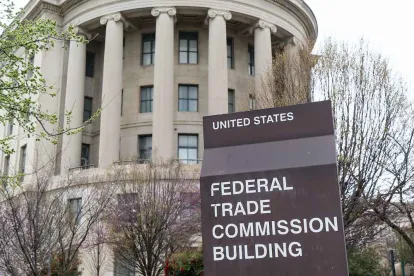When I was in college, I attended an old fashioned tent revival show. My roommate was taking a comparative religion class and I accompanied him to a number of spiritually-focused events outside the frame of most college students’ experiences.
The event was held in a huge tent in a field outside of town. The tent held about 100 folding chairs for the audience and a solid stage for the preachers and for the truly talented five-piece electrical band that backed them. Half an hour into the proceedings, the preacher yelled that everyone who loved God should jump to their feet. Nearly everyone did, and he sat them back down. The music intensified and the preacher yelled that everyone who loved Jesus should jump to their feet. Nearly everyone did, and he sat them back down. Now the music reached a crescendo as the preacher said that everyone who loved Jesus and God enough to donate $500 should jump to their feet.
A few people, caught up in the swelling sound, the energy of the crowd, and the preacher’s tricky cadence jumped to a standing position and were immediately swarmed by the preacher’s people, who took their names and/or money right then. The few folks that stood did not seem feverish with fervor to donate, but uncertain what just happened and too embarrassed to sit down when the crowd’s eyes were upon them.
I think about this night whenever I consider how skilled humans have become at tricking other humans. The tent-show preacher clearly had his manipulation planned well in advance, involving sights, sounds, heat, discomfort, movement patterns, crowd dynamics, and a practiced vocal trap, and he succeeded in pulling money from the pockets of people who weren’t planning to pay. Reach in them jeans and pull out them greens.
Such manipulations are commonplace on the internet where companies and fraudsters rely on everything from the latest research on brain function and logical shortcuts to outright fraud and manipulation to influence the way people behave online. This kind of manipulation is now called “dark patterns” and limiting dark patterns is gaining the attention of regulators and consumer advocates at all levels.1 U.S. Federal Trade Commission (FTC) Commissioner Rohit Chopra, recently chosen by President Biden to lead the Consumer Financial Protection Bureau, has said that dark patterns “pose an even bigger menace than their paper precursors” and are “the online successor to decades of dirty dealing in direct mail marketing.”
The FTC recently announced a workshop to examine digital dark patterns with an eye toward direct rules or regulations in the future. The workshop “will explore the ways in which user interfaces can have the effect, intentionally or unintentionally, of obscuring, subverting, or impairing consumer autonomy, decision-making, or choice. For example, some sites sneak extra items into a consumer’s online shopping cart, or require users to navigate a maze of screens and confusing questions to avoid being charged for unwanted products or services.” The FTC will be asking, “What types of dark patterns or use cases of dark patterns should the FTC and other government regulators focus on when bringing enforcement actions and engaging in other initiatives to combat dark patterns that are deceptive or unfair, or violate the law in other ways?”
The State of California in March issued new regulations to the California Consumer Privacy Act that prohibit businesses from using dark patterns on their websites to frustrate the ability of California consumers to opt out of the sale of personal information. California’s newest omnibus privacy law, passed in November, goes further. The California Privacy Rights Act defines “dark pattern” and states that any “agreement obtained through the use of dark patterns does not constitute consent.” The state’s attorney general said that the rules are designed to stop sites that subvert the legal options of consumers. Other states are considering similar legislation.
Official attention on the subject flows from the well-cited 2019 study by Arnuesh Mathur and others, who reviewed 53,000 product pages and 11,000 websites, finding that about one in ten of these employed dark patterns to some extent. The authors noted five essential types of dark patterns manipulating internet user behavior, including those that emphasize a particular choice more than others, steering users to make purchases without their knowledge, overt misleading statements or omissions, hidden information, or restricting the number of choices available to a user. Some of these include the old-fashion bait-and-switch devices, bringing the prospect in for one advertised item only to steer them toward another, higher-margin item. The site darkpatterns.org includes several more colorfully-named examples of online manipulation.
Famously, a past U.S. president “used dark patterns to trick supporters into donating millions more than intended” according to The Verge. The site reported, “ By June 2020, the Trump campaign had begun using dark patterns, computer interfaces designed to trick users, to automatically sign up campaign contributors to donate far more money than they had intended — recurring monthly donations, recurring weekly donations, even a one-time surprise “money bomb” per month — by pre-checking the checkboxes for each option, burying the fine print under paragraphs of bold text, and forcing his supporters to wade through it all and opt out if they wanted to make a simple donation.” The candidate’s supporters who tried to donate hundreds of dollars wound up being charged thousands, and then the candidate’s processor “pocketed $5 million worth of payment processing fees from those who asked for refunds.”
While one might question the value of lumping actual fraud and deception with long time marketing tactics like offering the business-preferred choice in a different font or color than the disfavored choice, there is no question that customer manipulation has run amok online. It seems like we are on the verge of a moment to treat these dirty dealings in the same manner as those sent to your home through the mail. You remember the mail, don’t you?
1 The term seems to have been coined by British consultant and customer experience designer Harry Brignull around 2012.




 />i
/>i

